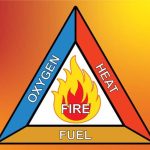If you are living in a country or a region which does not produce much oil, have you ever wondered who brought the oil to your local gas station? Apart from pipelines and trucks, the main transportation part is taken care of by ships known as oil tankers that specialize in carrying liquids in bulk
Introduction
In the earlier days when ships were made of wood (Just imagine the nerve of sailors who sailed on them) it was not even possible to think about transporting liquids in bulk over long distances. Even if liquids had to be carried they were enclosed in casks which were then stored like dry cargo. Later on with the increase of sophistication and use of iron and steel in shipbuilding the cargo holds could be made both water tight as well as airtight if required which eased the process of carrying liquids in bulk but collecting the liquid cargo in tanks. Such a ship is known as a tankship or an oil tanker ship.
For other types of ships, read articles about cruise ships, containers, reefers, FPSOs and barges.
Oil Tanker Ships
Making the cargo holds watertight and airtight was not the only hurdle in carrying huge quantities of liquids. There is something known as the free surface effect: it refers to the tendency of liquids to act in response to external stimuli of motion provided by sea waves, operator moves and so forth. Even if you do not understand this, just imagine carrying a big bucket of water on your head and suddenly you shake your hands for some reason. You might become stable after a couple of seconds but the motion imparted to the liquid in the bucket will keep making you unstable for substantially longer period of time. This might be ok for the bucket on your head but not feasible for a vessel in the midst of an ocean tossed around by merciless waves.
Of course the solution to this problem was found by extensive compartmentalization of the cargo holds which divided the bulk mass of the liquid into several independent tanks (An amazing application of the policy of divide and rule – or – divide and float).
Yet another challenge with dealing in liquids arises from the fact that they need to be efficiently pumped and transported across pipelines which wasn’t the case in the earlier days. But nowadays all these hurdles and challenges have been overcome and tanker trade is going strong.
Types of Tankers
Tankers can also be of various types and they are also designed to carry specific liquids (rather fluids) such as LPG, chemicals or even gases (just imagine that). Hence these ships are known by their special names such as LPG carriers, Chemical carriers, Gas carriers, Oil Tankers and so on.
Another classification can be based on their cargo carrying capacity and can be divided into
○ Seawaymax
○ Panamax
○ Aframax
○ Suezmax
○ VLCC
○ ULCC
in increasing order of their cargo carrying capacities. It would not be feasible to give details about all these and this topic might be taken up elsewhere in a different article but just to give you an idea a ULCC could carry even more than five hundred thousand tons of cargo.


Last but not least the pictures of a tanker should give you a better idea about how the vessel looks in general. The right hand side shows a chemical tanker while the left hand image is that of an oil tanker ship.


